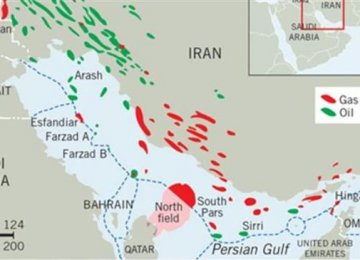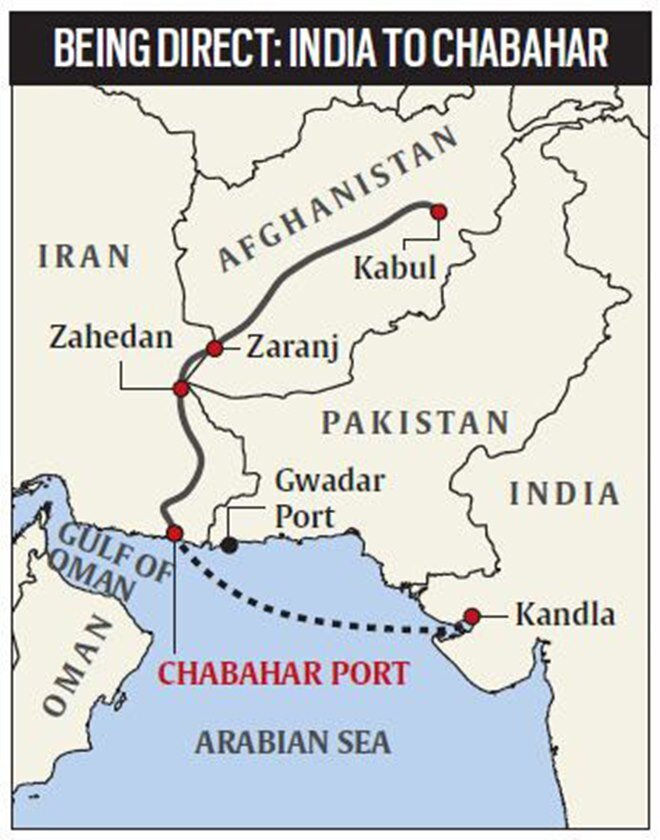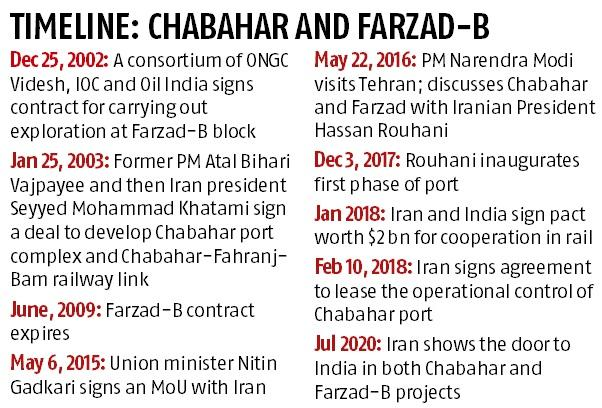International Relations
India - Iran
- 17 Jul 2020
- 5 min read
Why in News
Recently, the Ministry of External Affairs (MEA) has confirmed that India is no longer involved in the Farzad-B gas field project of Iran.
- Further, it said that India has not received any response from Iran since December 2019 on the future of the Chabahar-Zahedan railway project as well.
- It cited policy changes by the Iranian government, Iran’s uncertain finances, and the USA sanctions situation as the reasons behind the decisions on Indian infrastructure projects in Iran.
Key Points
- Farzad-B Gas Field:

- It is located in Persian Gulf (Iran).
- The contract for exploration of the field was signed in 2002 by Indian consortium comprising ONGC Videsh, Indian Oil Corporation and Oil India.
- The contract expired in 2009 after declaration of commerciality of the field, based on the gas discovery.
- It has gas reserves of more than 19 trillion cubic feet.
- ONGC has invested approximately USD 100 million.
- Since then, the consortium has been trying to secure the contract for development of the field.
- The major dispute between India and Iran was over setting up of two pipelines, and also over money to be quoted on the development plan.
- Around 75% of the deal was finalised by May 2018, when the USA unilaterally withdrew from the nuclear deal and announced sanctions on Iran.
- In January 2020, India was informed that in the immediate future, Iran would develop the field on its own and would like to involve India appropriately at a later stage.
- Chabahar-Zahedan Railway Project:

- In the ‘New Delhi Declaration’ signed in 2003, both countries had decided to jointly develop the Chabahar Port complex.
- The Port development was exempted from the sanctions.
- India’s main investment in the Chabahar Port where it has taken over operations of one terminal, had progressed well in the last few years, handling 82 ships with 12 lakh tonnes of bulk cargo in 8200 containers since December 2018.
- A contract to develop the 628-km railway line (Chabahar-Zahedan) along the Iran-Afghanistan border was signed in 2016.
- IRCON was appointed by the Government of India to assess the feasibility of the project. It was working with CDTIC, an Iranian company.
- It had completed the site inspection and review of the feasibility report. The Iranian side was to nominate an authorised entity to finalise outstanding technical and financial issues. India waited for the same.
- However, Iran started work on the railway project in July 2020.
- India is not part of this project as of now since there is lack of clarity on whether it will attract the USA sanctions. However, it has conveyed to Iran that it is open to joining the project later.
- In the ‘New Delhi Declaration’ signed in 2003, both countries had decided to jointly develop the Chabahar Port complex.
- Concerns for India:
- Iran’s growing proximity to China.
- Further, Iran seems to be sceptical of India’s diplomatic ties with the USA.
- Farzad-B gas Field:
- India needs gas and Iran remains one of the best options as geographically, Iran is closest to India of all the countries in the Persian gulf region.
- Further, it could have improved India-Iran ties as the crude oil import from Iran remains impacted due to the USA sanctions.
- Chabahar is not only a key to maritime relations between both the countries, but also provides an opportunity to India to reach Russia and Central Asia.
- Further, it allows India to bypass Pakistan which had blocked Indian aid to Afghanistan and all trade over land.
Way Forward
- India needs to play a balancing act between the USA and Iran.
- Further, India needs to closely watch the space created by its exit.
- In a world where connectivity is seen as the new currency, India’s loss on account of these projects can become gain for some other country, especially China.







